The Murree of Sindh: The hill less travelled
This little known but potentially lucrative tourist destination in Sindh needs due attention.
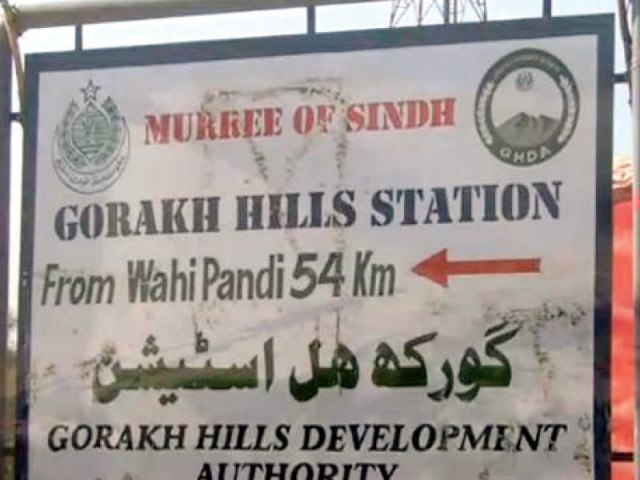
The sign board of Gorakh Hills Development Authority. PHOTO: FILE
Gorakh Hill may not boast of a snow-capped peak but Sindh’s coldest tourist site gives summer visitors a pleasant respite from heat. At some 5,700 feet above sea, ‘the Murree of Sindh’ has temperatures ranging from 10-27 degree Centigrade, dipping down to -5 in the winter.
Yet, the picturesque Gorakh Hill is almost unknown to many in Pakistan. Lack of facilities makes it even more challenging to highlight this resort.
“The site was discovered by Britishers before the partition,” remembers 60-year-old Mama Faizu, who lives at the site along with his family and relatives. “Our clan has lived around these mountains for centuries.”
The way up from Wahi Pandi to these idyllic green hills takes dizzying twists and turns. Though daring youngsters from the nearby towns of Dadu and Johi race their motorcycles to the peak, Gulzar Ali Khushk, the project director of the Gorakh Hills Development Authority (GHDA), warns against tourists similarly trying their luck in a car. Far better, he advises, is to be guided to the site by the GHDA contact office in Dadu City.
This facilitation of visitors is part of a larger plan to stimulate local tourism and woo visitors. “People usually go out of the province and the country during vacations, but anyone who visits this site never forgets it,” claims Khushk.
“The greenery of the peaks is indicative of lower temperatures,” says Razi Ahmed, a villager. “You feel a big difference when moving from the flat plains up the hills.” In stark contrast with the flat plains, arid deserts and scorching temperatures that Sindh is known for, the hill station even received snowfall this January. Villagers eagerly show visitors the videos they made of the spectacle. “People from Karachi specially love to come and stay here,” says Ahmed, a resident of Gorakh.
Not an easy hill to climb
Despite all the potential, the road to Gorakh is strewn with obstacles. Water and electricity are available but the communications system is weak. The torrential rains of 2011 critically damaged roads and bridges to the site.
Repairs are currently underway and Khushk is optimistic about expanding the facilities Gorakh offers. Since this March, a mosque, a restaurant and eight family huts are available to visitors. “Families can stay in these huts free of cost,” says Khushk.
Yet, the lack of facilities repels potential tourists. The staff at the site informed The Express Tribune that most of visitors [mostly from Karachi] have to stay under open sky because of lack of facilities, which is one reason why the site is mostly attracting groups of males.
It helps that police check posts are set up every five to six km and the crime rate in the area has been low – zero, according to officials – since 2005. Khushk envisions a transformation of Gorakh that would put it on par with any other tourist destination in Pakistan. A market reminiscent of Murree’s Mall road, a residential area and an educational institute are just some of the projects in the pipeline.
The authorities expect this resort will attract adventurers. Khushk said that it is indeed an adventure to reach the site, adding that there are plans to eventually introduce a mountain safari in the future. “It’ll attract people from across the country and hopefully people from other countries too,” he added. However authorities say the realistic priority is to attract visitors from within the province.
She came, she saw
The people of Gorakh hill still remember that special day in 1988 fondly, when Benazir Bhutto had arrived there by helicopter. She wanted to visit the site and so came especially from Karachi. But the officials who were supposed to reach there before Bhutto with 70 chairs and other material did not know the way well. The villagers helped and guided them to the hill. Faizu shared how he and over 30 other men of the area helped the officials. “The officials parked their vehicles at Khawal Luk. It was tough for them to climb as it was too cold,” he added.
Tough competition
Due to a drier arid climate, Sindh does not attract as many tourists as it should, because while the province may not have a lot of hill stations, it has sites rich in history and culture.
For tourists, Gilgit-Baltistan is recognized as a paradise for mountains, climbers, trekkers and hikers. Hunza Valley, Chitral Valley and Kalash Valley are ideal vacation spots. Khyber-Pakhtunkhwa is rich in natural beauty and despite a compromised security situation continues to attract tourists. In Punjab, there is Murree, the country’s top tourist site. Even Balochistan offers Pishin, Ziarat and four famous passes.
The infrastructure in Punjab and K-P is conducive for the tourism industry.
But in Sindh, tourism is a neglected area, and naturally beautiful locations, including Kirthar National Park and Gorakh, lack facilities for tourists. If authorities show will and commitment, this dismal situation could change for the better.
Published in The Express Tribune, April 5th, 2014.

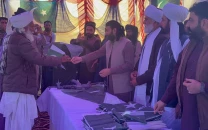


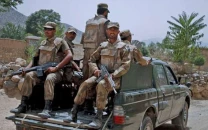


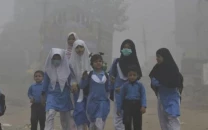



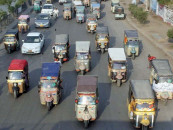







COMMENTS
Comments are moderated and generally will be posted if they are on-topic and not abusive.
For more information, please see our Comments FAQ